Northern hemisphere warming rates: More than you may have heard
Posted on 14 January 2011 by muoncounter
Guest post by muoncounter
Winter is the time of year when denials of global warming seem to come from all sides. It is therefore a useful time to determine just what our current rates of warming are.
The very thorough SkS post Assessing global surface temperature reconstructions put the average global warming trend at 0.14-0.16 deg C/decade.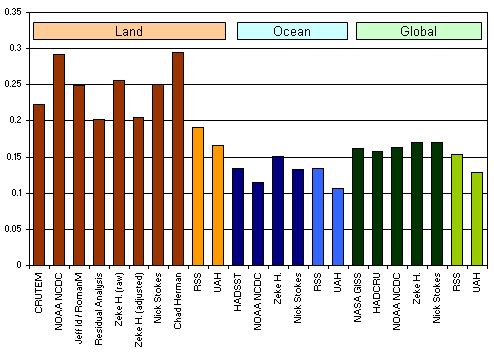
This rate is typical of the linear trend of modern temperature records which in some cases go back to 1880. And some skeptics take comfort in this rate, claiming that it is nothing to worry about. But is this rate of change an accurate description of what we are currently seeing?

--- NASA GISS, 7 Jan 2011
The northern latitudes (upper graph) have warmed more than the rest of the globe. This figure also makes it clear that the rate of warming since approximately 1970 is much greater than the linear trend over the entire record.
For the global average, warming in the last century occurred in two phases, from the 1910s to the 1940s (0.35°C or 0.63ºF), and more strongly from the 1970s to the present (0.55°C or 1.0ºF) at a rate of about 0.16ºC (0.3ºF) per decade. An increasing rate of warming has taken place over the last 25 years, and 12 of the 13 warmest years on record have occurred in the past 13 years.
A recent SkS article on
This begs the question: What is the recent (30 or more year) warming rate in other parts of the northern hemisphere?
A surprisingly straightforward way to analyze temperature trends over large areas is by comparison of the long term (100 year) trend to the more recent (50 year) trend. This Mapview interface to the HadCrut/GHCN data makes this task very easy. Individual 5x5 degree grids may be selected and a linear fit applied (as shown in Figure 1a). The time window may then be altered from this graph screen, giving a recalculated linear fit (Figure 1b) upon redraw. The slope of each linear fit in degrees C per decade, along with an estimate of statistical significance, is given in the right-hand panel of each graph.
Figure 1a. 100 year trend for 5x5 degree grid in central Europe(50-55N, 10-15E, roughly centered on Berlin)
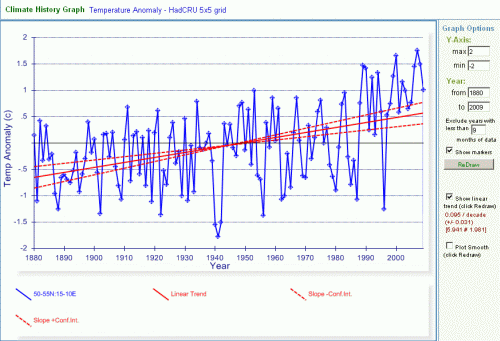
Figure 1b, 50 year trend, same 5x5 degree grid
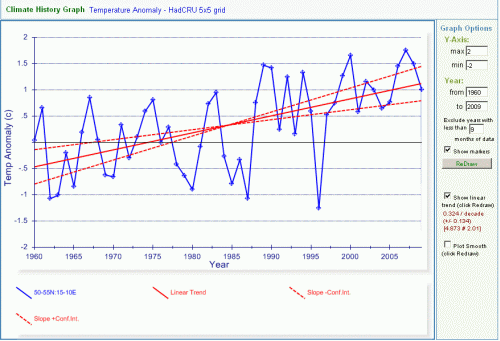
Table 1a shows the results of applying this process to 5x5 grids across a large part of
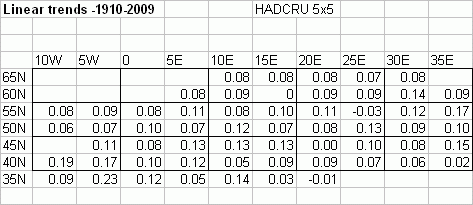
The arithmetic average of all these 100 year trends is 0.09 degC/decade.
Table 1b shows the trends for the same grids with linear fits for the interval 1960-2009:
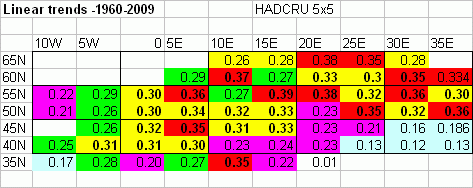
The average of all these 50 year trends is 0.28 degC/decade. Red indicates greater than 0.35, yellow 0.3-0.35, green 0.25-0.3 and purple 0.2-0.25 degC/decade.
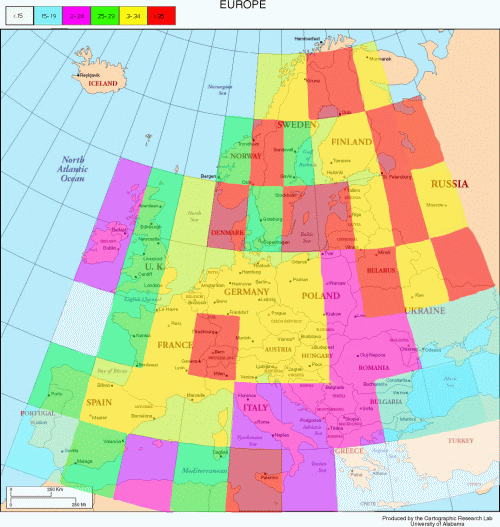
It is clear from this analysis that during the last 50 years, large parts of































 Arguments
Arguments






























[DB] Trenberth's publication record is here. Many PDF's available for download.
[DB] "From the graph, it shows both hemispheres have warmed. Therefore, global warming is a valid theory."
Global warming is a valid theory from far more than that.
"From data, we see that 67-80% of the warming we assumed was due to global warming was actually increased tilt of the Northern Hemisphere towards the Sun."
Umm, no. The axial tilt of the Earth is unaffected by its temperature.
"It takes a lot more carbon to destabilize the planet than we thought."
This is an unsupported assertion. Please provide a supportative link.
Please note that the use of All-Caps (which I have reverted back to caps & lower case for you) is a Comments Policy violation. Please take the time to familiarize yourself with it. Thanks!
[DB] "It is trending towards cooler conditions"
Wrt Milankovitch forcings, yes. But that ignores the very real and sizeable anthropogenic forcings which are unprecedentally warming both hemispheres today.
"Much scare tactic news comes from winter melt in the Arctic..."
Please avoid ideological labels like "scare tactics"
"...even though the whole year overall is cooler."
Umm, no. Use the search function again. The 80s were warmer than the 70s, the 90s were warmer than the 80s, the "Aughts" were warmer than the 90s, etc. This overall warming trend (not cooling) is well documented. Or take this portion to the It's cooling thread.
"Please re-read http://www.skepticalscience.com/LIG5-1110.html"
If you disagree with the linked post (which you should re-read), take that portion of the discussion there, where it is better-suited. Long-term forcings, like Milankovitch changes, will cause long-term changes in climate. Again, well-known.
"I assert that Climate change from the data we have gathered *is not currently a major threat to humanity*."
Unsupported and therefore baseless. And OT here. Please take this portion to the It's not bad thread.
"At what point would carbon levels have to rise to become a major problem?"
At no point in the past 800,000 years have atmospheric CO2 levels ever exceeded 298.7 ppm. The last time CO2 levels were this high there was no mankind. So who says that they are not too high already?
[Source]
"If and when it does become a major problem..."
IBID
"...can humanity mount an effective resolution before its too late?"
Who says it's not 40 years too late already (see the Climate Change: The 40 Year Delay Between Cause and Effect thread)? Even acting now and holding all GHG emissions to zero for the next 40 years, the Earth will continue to warm and the climate will continue to change accordingly.